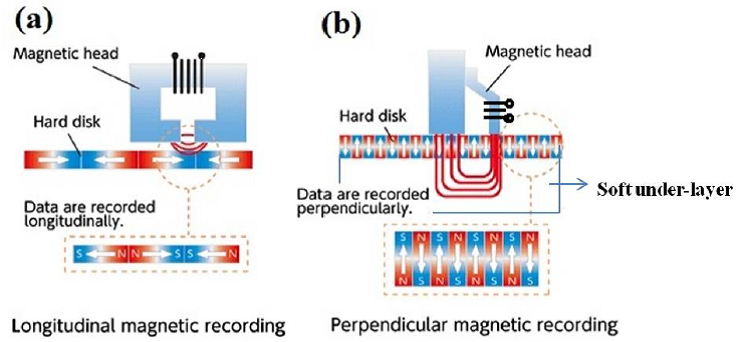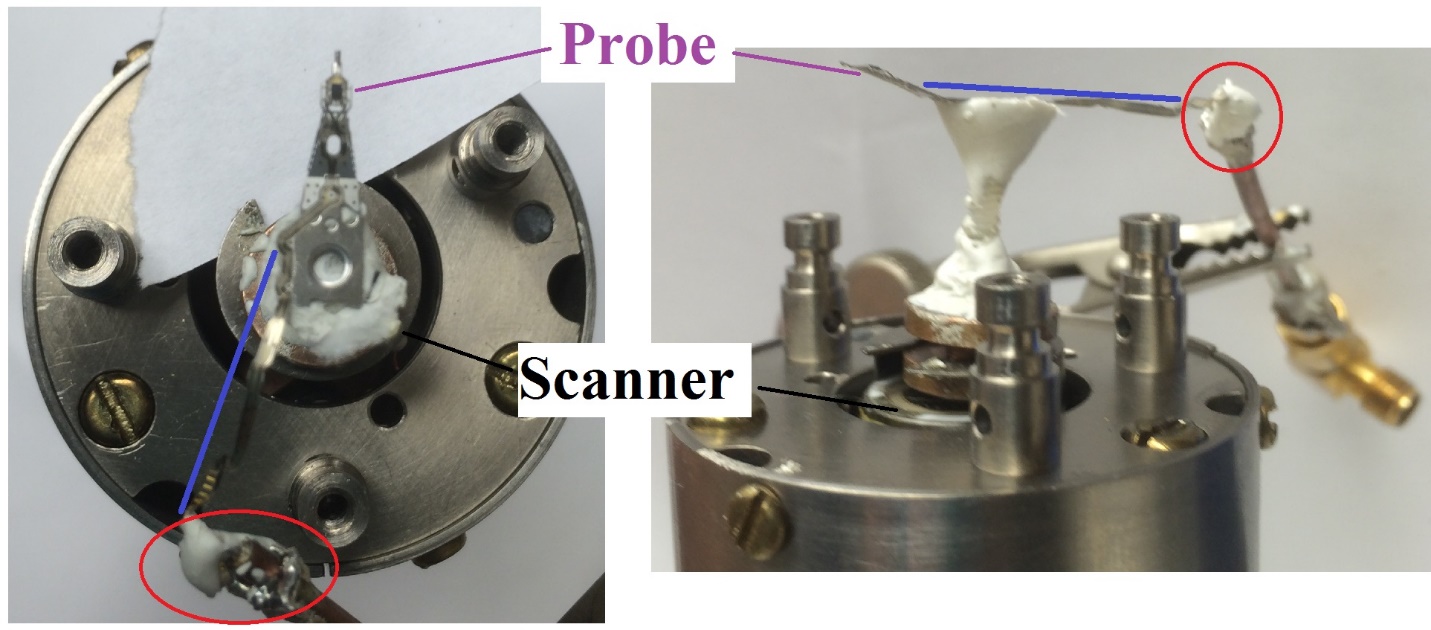
Anlage Research Group |
| High Frequency Superconductivity, Microscopy, Nanophysics, and Chaos |
Affiliations:
One of the characteristics of superconductivity is the Meissner effect. A superconductor will actively screen out a static or dynamic magnetic field from its interior. It does so by generating a diamagnetic screening current within a penetration depth or so of its surface. However, the superconductor must pay an energy penalty for creating this current and this leads to degradation of the superfluid density. If the superfluid density is perturbed by external factors, superconductors will behave in a nonlinear manner in many measurable quantities. For all superconductors, this nonlinear response is expected to be present and is considered an intrinsic nonlinearity. These external factors can be in the form of an applied current or magnetic field, for example. If the applied field/current is much smaller than the critical field/current, the generated nonlinearity is usually regarded as the nonlinear Meissner effect (NLME), and sometimes can be described by the Ginzburg-Landau (GL) theory. Nonlinear response can also be created by the generation and motion of magnetic vortices. A Josephson junction between two superconductors separated by a thin insulating barrier, can also contribute to nonlinear response. These types of response can be considered as extrinsic nonlinearity. Hence the nature of the nonlinear response can give information about the mechanism responsible for its generation. If combined with Scanning Probe Microscopy techniques, mapping the surface nonlinearity of a superconductor can be used to find and learn about local surface inhomogeneity and defects.
See our related work on the nonlinear properties of superconductors investigated through laser scanning microscopy.
Scanning Probe Microscope with a Magnetic Writer Head By using a magnetic write head from a conventional hard disk drive we developed the first high-RF-field localized microwave microscopes capable of making quantitative spatially-resolved images of intrinsic and extrinsic superconducting nonlinearities. Because of the need for increased data storage density, the hard drive head separates the write and read element to individually optimize the performance of both elements. For the write element, the write heads have progressed into a type of thin-film inductive probe. The main part of the writer is a yoke (magnetic head) surrounded by a few turns of helical wire coil which generates the magnetic flux. The yoke is usually made of high permeability materials such as ferrite or permalloy to channel the magnetic flux. The magnetic flux goes out through the small gap, usually 200 nm ~ 100 nm wide, at the end of the yoke. This special shape design enables the write field to penetrate the recording medium more efficiently in the perpendicular geometry recording. Several studies of the high frequency characteristics of modern magnetic write heads shows well-confined fields on the length scale of several hundred nanometers at a few GHz frequency. These characteristics enable us to achieve sub-micron resolution in the GHz frequency region in the design of our near-field microwave microscope.
Because of the need for increased data storage density, the hard drive head separates the write and read element to individually optimize the performance of both elements. For the write element, the write heads have progressed into a type of thin-film inductive probe. The main part of the writer is a yoke (magnetic head) surrounded by a few turns of helical wire coil which generates the magnetic flux. The yoke is usually made of high permeability materials such as ferrite or permalloy to channel the magnetic flux. The magnetic flux goes out through the small gap, usually 200 nm ~ 100 nm wide, at the end of the yoke. This special shape design enables the write field to penetrate the recording medium more efficiently in the perpendicular geometry recording. Several studies of the high frequency characteristics of modern magnetic write heads shows well-confined fields on the length scale of several hundred nanometers at a few GHz frequency. These characteristics enable us to achieve sub-micron resolution in the GHz frequency region in the design of our near-field microwave microscope.
 Top and side view of CryoSXM piezo tube and integrated magnetic writer probe. Transmission line is shown by guiding lines in blue. Red circles show the location where transmission line is soldered to coaxial cable.
Details of the setup and integration are outlined in paper #141 below.
Current work: Microscopic Investigation of Materials Limitations of Superconducting RF Cavities
Currently we are funded by US Department of Energy through grant # DE-SC0012036T to investigate the limitations of superconducting radio frequency (SRF) accelerator cavities due to surface defects. SRF cavities are typically made from bulk Nb. The planned operational temperature and frequency for these cavities are 2 K and 1.3 GHz, respectively. Our approach is to locally stimulate the surface of bulk Nb with RF magnetic fields on the order of 200 mT at nearly the same frequency and temperature as experienced inside SRF cavities. We then quantitatively measure nonlinear response of the material to identify specific defects which prevent BCS-limited SRF performance of the cavity. These measurements are performed in a spatially-resolved manner and correlated with surface preparations and pre-characterized defects typically found in SRF cavities.
Top and side view of CryoSXM piezo tube and integrated magnetic writer probe. Transmission line is shown by guiding lines in blue. Red circles show the location where transmission line is soldered to coaxial cable.
Details of the setup and integration are outlined in paper #141 below.
Current work: Microscopic Investigation of Materials Limitations of Superconducting RF Cavities
Currently we are funded by US Department of Energy through grant # DE-SC0012036T to investigate the limitations of superconducting radio frequency (SRF) accelerator cavities due to surface defects. SRF cavities are typically made from bulk Nb. The planned operational temperature and frequency for these cavities are 2 K and 1.3 GHz, respectively. Our approach is to locally stimulate the surface of bulk Nb with RF magnetic fields on the order of 200 mT at nearly the same frequency and temperature as experienced inside SRF cavities. We then quantitatively measure nonlinear response of the material to identify specific defects which prevent BCS-limited SRF performance of the cavity. These measurements are performed in a spatially-resolved manner and correlated with surface preparations and pre-characterized defects typically found in SRF cavities.

 Shown above is a 2-dimensional raster scan image of the third harmonic nonlinear response of a Bi-Sr-Ca-Cu-O (BSCCO) oxide superconductor thin film acquired at a temperature of 89.5 K. The scan was performed near the edge of the sample. The scanned area is shown in the figure on the right. Sample supplied by Ken Burch, Boston College.
Nb Measurements
Our recent data (shown below) acquired from 1µm Nb film deposited on Cu substrate shows periodic 3rd harmonic response (V3f) as a function of applied RF field amplitude (~Hf). The measurement was repeated at several fixed temperatures for an input frequency f = 2.2 GHz.
The onset of periodicity is temperature-dependent however the period is constant for all temperatures. Currently we are refining a model to explain this response using vortex creation and annihilation processes.
Bulk Nb measurement data shows very similar characteristics.
Shown above is a 2-dimensional raster scan image of the third harmonic nonlinear response of a Bi-Sr-Ca-Cu-O (BSCCO) oxide superconductor thin film acquired at a temperature of 89.5 K. The scan was performed near the edge of the sample. The scanned area is shown in the figure on the right. Sample supplied by Ken Burch, Boston College.
Nb Measurements
Our recent data (shown below) acquired from 1µm Nb film deposited on Cu substrate shows periodic 3rd harmonic response (V3f) as a function of applied RF field amplitude (~Hf). The measurement was repeated at several fixed temperatures for an input frequency f = 2.2 GHz.
The onset of periodicity is temperature-dependent however the period is constant for all temperatures. Currently we are refining a model to explain this response using vortex creation and annihilation processes.
Bulk Nb measurement data shows very similar characteristics.

This work is supported by the Department of Energy and the Maryland Quantum Materials Center.
Some relevant papers: (All papers can be downloaded from the full publication list)
129. Dragos I. Mircea, Hua Xu, Steven M. Anlage, “Phase-sensitive Harmonic Measurements of Microwave Nonlinearities in Cuprate Thin Films,” Phys. Rev. B 80, 144505 (2009). pdf
141. Tamin Tai, X. X. Xi, C. G. Zhuang, Dragos I. Mircea, Steven M. Anlage, “Nonlinear Near-Field Microwave Microscope For RF Defect Localization in Superconductors,” IEEE Trans. Appl. Supercond. 21, 2615-2618 (2011). pdf
154. Tamin Tai, Behnood G. Ghamsari, Steven M. Anlage, C. G. Zhuang, X. X. Xi, “MgB2 nonlinear properties investigated under localized high rf magnetic field excitation,” Phys. Rev. ST Accel. Beams 15, 122002 (2012). pdf
157. Tamin Tai, B. G. Ghamsari, Steven M. Anlage, “Nanoscale Electrodynamic Response of Nb Superconductors,”IEEE Trans. Appl. Supercond. 23, 7100104 (2013). pdf
171. Tamin Tai, B. G. Ghamsari, and Steven M. Anlage, “Modeling the nanoscale linear response of superconducting thin films measured by a scanning probe microwave microscope,” J. Appl. Phys. 115, 203908 (2014). pdf
176. Tamin Tai, B. G. Ghamsari, T. Bieler, T. Tan, X. X. Xi, and Steven M. Anlage, “Near-Field Microwave Magnetic Nanoscopy of Superconducting Radio Frequency Cavity Materials,” Applied Physics Letters 104, 232603 (2014). pdf
182. Tamin Tai, B. G. Ghamsari, T. Bieler, Steven M. Anlage, “Nanoscale Nonlinear Radio Frequency Properties of Bulk Nb: Origins of Extrinsic Nonlinear Effects,” Phys. Rev. B 92, 134513 (2015). pdf
193. Tamin Tai, Behnood Ghamsari, Jong-Hoon Kang, S. Lee, Chang-Beom Eom, Steven M. Anlage, “Localized High Frequency Electrodynamic Behavior of an Optimally-doped Ba(Fe1-xCox)2As2Single Crystal film," Physica C 532, 44-49 (2017). pdf
203. Bakhrom Oripov, Thomas Bieler, Gianluigi Ciovati, Sergio Calatroni, Pashupati Dhakal, Tobias Junginger, Oleg B. Malyshev, Giovanni Terenziani, Anne-Marie Valente-Feliciano, Reza Valizadeh, Stuart Wilde, Steven M. Anlage, “High Frequency Nonlinear Response of Superconducting Cavity-Grade Nb surfaces,” Phys. Rev. Applied 11, 064030 (2019). pdf
Phone: (301) 405-7321 Fax: (301) 405-3779
Copyright © 2008 University of Maryland
Contact us with comments, questions and feedback